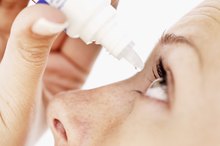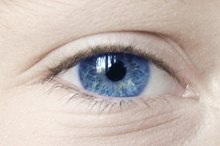What does fact checked mean?
At Healthfully, we strive to deliver objective content that is accurate and up-to-date. Our team periodically reviews articles in order to ensure content quality. The sources cited below consist of evidence from peer-reviewed journals, prominent medical organizations, academic associations, and government data.
The information contained on this site is for informational purposes only, and should not be used as a substitute for the advice of a professional health care provider. Please check with the appropriate physician regarding health questions and concerns. Although we strive to deliver accurate and up-to-date information, no guarantee to that effect is made.
How to Get Rid of a Sty on Your Eye
A sty is an infection on the eyelid, usually along the edge near the eye lashes, which results in a bump or pimple. While rarely serious, the condition can cause major discomfort including itching, pain, swelling of the eyelid and watery eyes. In most cases a sty will heal on its own in a few days. But there are treatment options that can provide relief from the symptoms and speed up the healing process.
If you are experiencing serious medical symptoms, seek emergency treatment immediately.
Apply a warm, wet compress to the eye three to six times per day. Soak a sterile gauze or cotton pad in hot -- but not scalding -- water, and apply to the affected eye. Leave in place for 10 to 15 minutes. This will relieve pain and help the sty come to a head, like a pimple 1.
How to Get Rid of Styes in Your Eyelids
Learn More
Use an over-the-counter eye ointment or wash. These can help keep the eye area clean and provide additional relief. There are also medicated pads available, which serve this same purpose. Apply these products according to package recommendations.
See your eye doctor if the sty does not resolve on its own. Your doctor can provide additional treatment in the form of antibiotic ointments or drops, and can lance a sty that hasn't ruptured naturally to relieve pressure and pain. If you suffer from styes frequently, he or she may prescribe an antibiotic treatment to be used regularly as a preventative.
Tips
Refrain from wearing eye makeup or contact lenses while treating a sty. This can add to the discomfort.
A sty is caused by the staphylococcal bacteria. This bacteria is commonly found in the nose, and can be easily transferred to the eye when touching one after the other. Keep your risk of infection lower by refraining from touching the eyes, and by thoroughly washing your hands before necessary hand-to-eye contact.
Warnings
Never attempt to drain or "pop" a sty on the eyelid yourself. This should be done by your eye doctor, due the risk of injury to the delicate eye tissues.
If your eyelid bump is hard or seems more like a cyst under the skin of the eyelid, it may be a chalazion. These grow and heal more slowly, and can affect vision if swelling persists. Your eye doctor can determine if your condition is in this category and recommend appropriate treatment.
Related Articles
References
Tips
- Refrain from wearing eye makeup or contact lenses while treating a sty. This can add to the discomfort.
- A sty is caused by the staphylococcal bacteria. This bacteria is commonly found in the nose, and can be easily transferred to the eye when touching one after the other. Keep your risk of infection lower by refraining from touching the eyes, and by thoroughly washing your hands before necessary hand-to-eye contact.
Warnings
- Never attempt to drain or "pop" a sty on the eyelid yourself. This should be done by your eye doctor, due the risk of injury to the delicate eye tissues.
- If your eyelid bump is hard or seems more like a cyst under the skin of the eyelid, it may be a chalazion. These grow and heal more slowly, and can affect vision if swelling persists. Your eye doctor can determine if your condition is in this category and recommend appropriate treatment.
Writer Bio
Dana Hall McCain is a freelance writer based in Dothan, Ala., and is a a regular contributor to numerous regional publications. She writes features and columns on a variety of topics, including the outdoors, faith and health/wellness. She received a Bachelor of Arts from Auburn University in public relations/communication in 1995.









